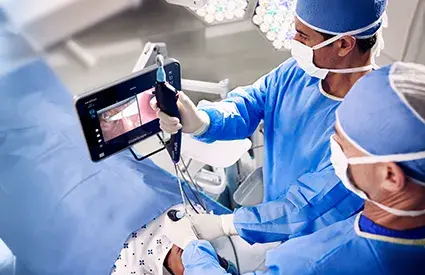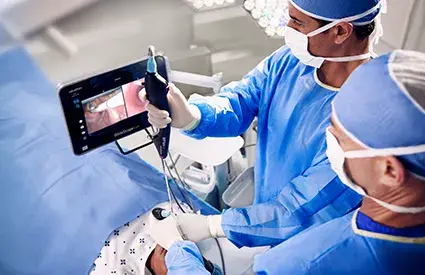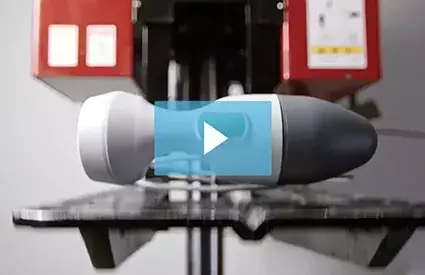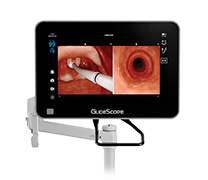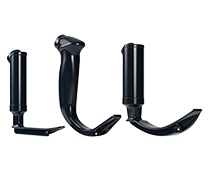Video Laryngoscopy vs Direct Laryngoscopy for Endotracheal Intubation in the Operating Room: A Cluster Randomized Clinical Trial. JAMA. Published online March 18, 2024. doi:10.1001/jama.2024.0762
Kurt Ruetzler, MD; Sergio Bustamante, MD; Marc T. Schmidt; Federico Almonacid-Cardenas, MD; Andra Duncan, MD; Andrew Bauer, MD; Alparslan Turan, MD; Nikolaos J. Skubas, MD; Daniel I. Sessler, MD; for the Collababorative VLS Trial Group

At a Glance
Video Laryngoscopy (VL) has been shown to improve glottic view and first pass success in urgent and routine intubations compared to Direct Laryngoscopy (DL),1-3 however a recent meta-analysis observed that the clinical evidence related to first pass success using hyperangulated blades was based on small trials.4 Furthermore, it showed that, for some trials, experience with hyperangulated blades may have been insufficient compared to DL, thus underestimating the benefits.4
A US academic hospital conducted a study which included 8,429 surgical procedures, examining whether first pass success rates are higher with DL or hyperangulated VL. Another objective of this landmark study was to determine the number of failed intubations and dental/airway injury by intubation approach.
The study concluded that use of GlideScope® hyperangulated VL increases first pass success of endotracheal intubation when compared with DL, with no increased risk of airway or dental injuries.
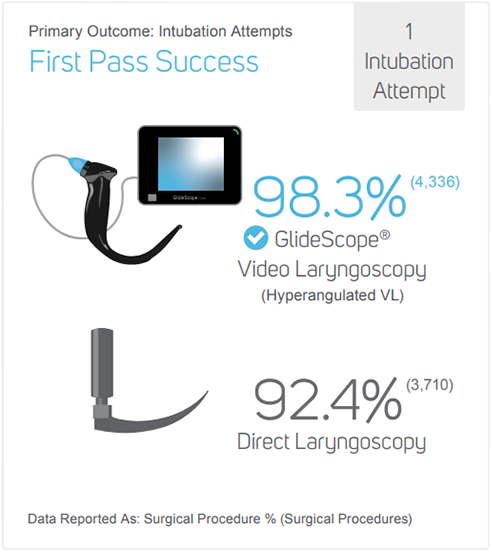
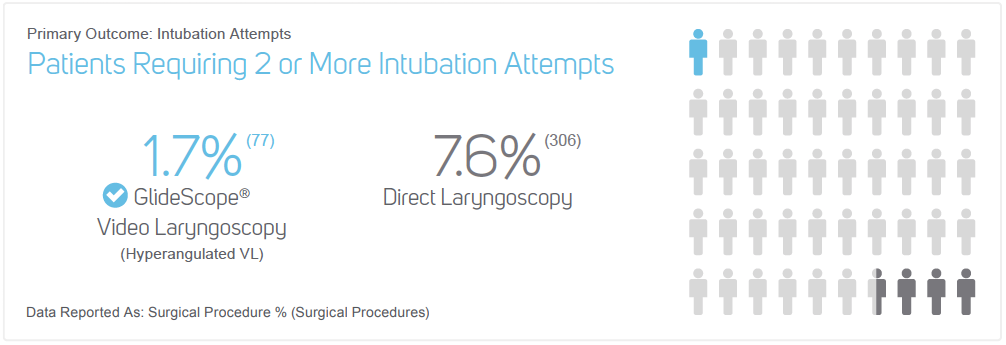
As the largest airway trial ever performed in surgical patients, which included patients with a history of difficult intubation (~3% of total) , researchers concluded that the findings are likely to improve clinical practice.
Study Design
- Cluster randomized clinical trial collected data from a total of 22 operating rooms, divided into 2 clusters of 11 rooms each
- A total of 7,736 patients were enrolled in the trial, with a total of 8,429 surgical procedures
- Intubation attempts, intubation failures and complications between DL and GlideScope® VL were analyzed
- The trial included a wide spectrum of intubating practitioners and varying intubation experience levels
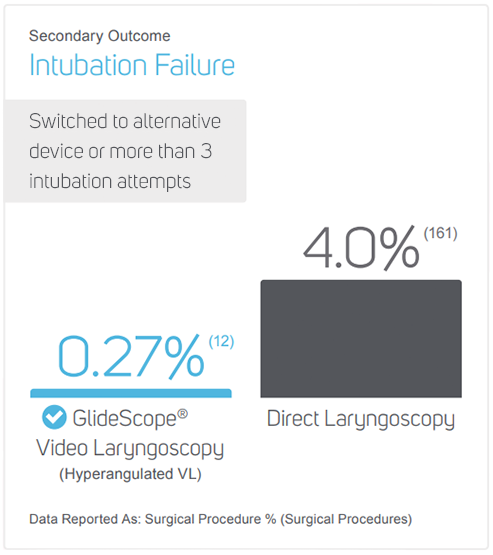
Results
Compared to direct laryngoscopy, use of the GlideScope hyperangualted VL as the default intubation device:
- Reduced the number of patients requiring more than 1 intubation attempt by a factor of four (7.6% vs 1.7%)
- Reduced the rate of intubation failure by a factor of 15 (0.27% vs 4.0%)
- Did not increase the risk of dental or airway injuries
Conclusion
Data from this groundbreaking trial included 8,429 procedures, and results demonstrated that, in comparison to DL for initial approach, procedures that utilized GlideScope® hyperangulated VL showed increased first pass success rates, reduced repeated intubation attempts and intubation failures, with no increase in dental or airway injuries. This overall reduction in intubation attempts is clinically relevant, as repeated intubations are associated with higher risks for patient harm.5
Therefore, this trial supports GlideScope video laryngoscopy as a better intubation approach, for greater first pass success and reduced intubation attempts, for elective or emergent surgical patients, across a wide range of clinician intubation levels
On-Demand Webinar
Video Laryngoscopy—The New Gold Standard?
Explore clinically significant results from a landmark study comparing intubation first-pass success rates of Video Laryngoscopy with Direct Laryngoscopy.
1. Aziz MF, Dillman D, Fu R, Brambrink AM. Comparative effectiveness of the C-MAC video laryngoscope versus direct laryngoscopy in the setting of the predicted difficult airway. Anesthesiology. 2012;116(3):629-636. doi:10/fx3pfm
2. Silverberg MJ, Li N, Acquah SO, Kory PD. Comparison of videolaryngoscopy versus direct laryngoscopy during urgent endotracheal intubation: a randomized controlled trial. Crit Care Med. 2015;43(3):636-641. doi:10/gfkd6x
3. Taylor AM, Peck M, Launcelott S, et al. The McGrath® Series 5 videolaryngoscope: a randomised, controlled trial in patients with a simulated difficult airway. Anaesthesia. 2013;68(2):142-147.doi:10/f4hj2n
4. Hansel J, Rogers AM, Lewis SR, Cook TM, Smith AF. Videolaryngoscopy versus direct laryngoscopy for adults undergoing tracheal intubation. Cochrane Database Syst Rev. 2022;2022(4):CD011136. doi:10/gtmss4
5. Sakles JC, Chiu S, Mosier J, Walker C, Stolz U. The Importance of First Pass Success When Performing Orotracheal Intubation in the Emergency Department. Acad Emerg Med. 2013;20(1):71-78. doi:10/f4kxbn

